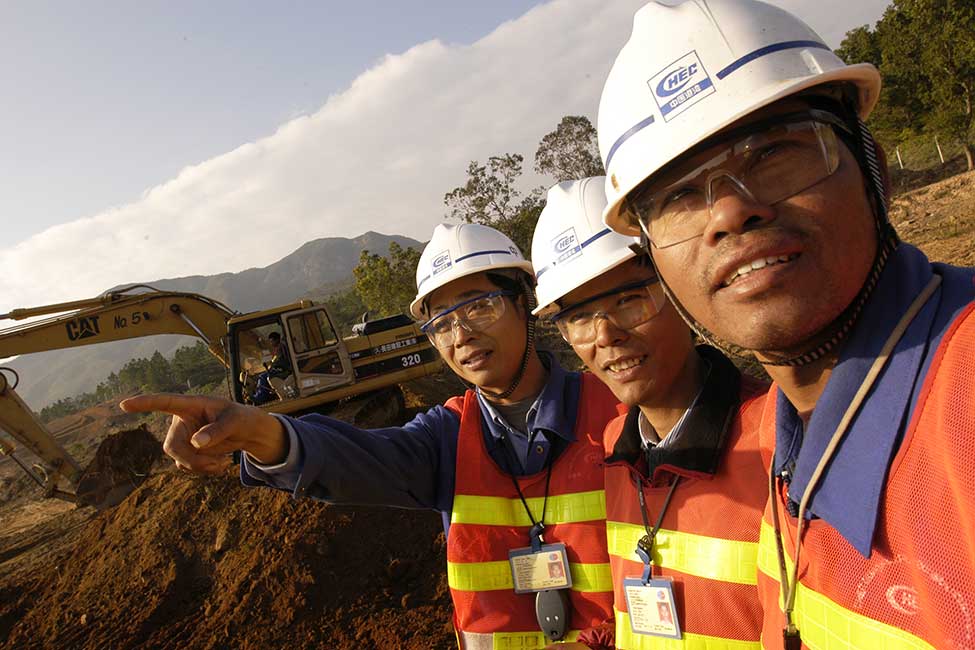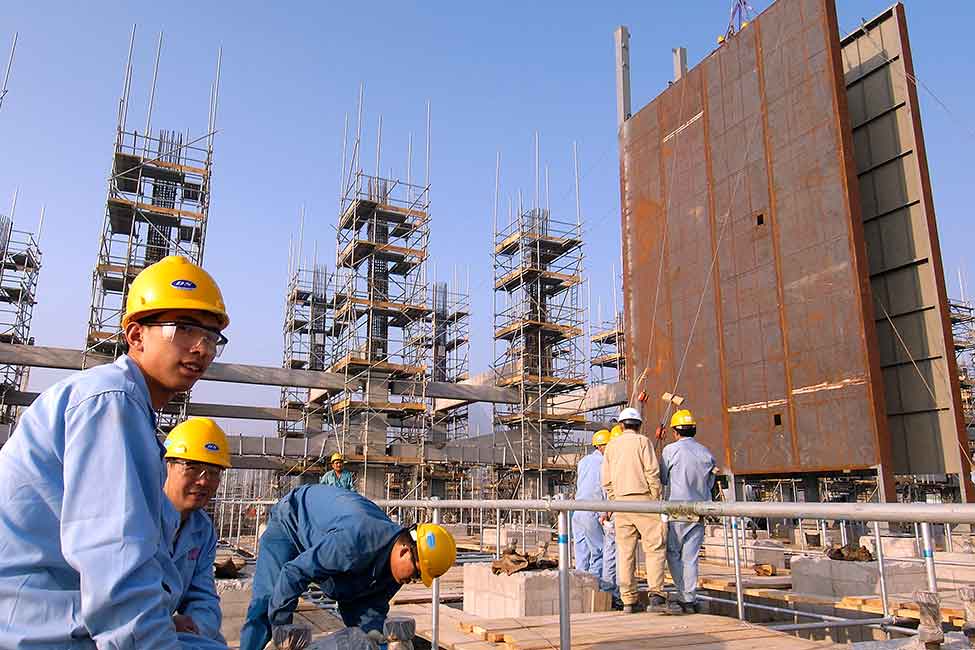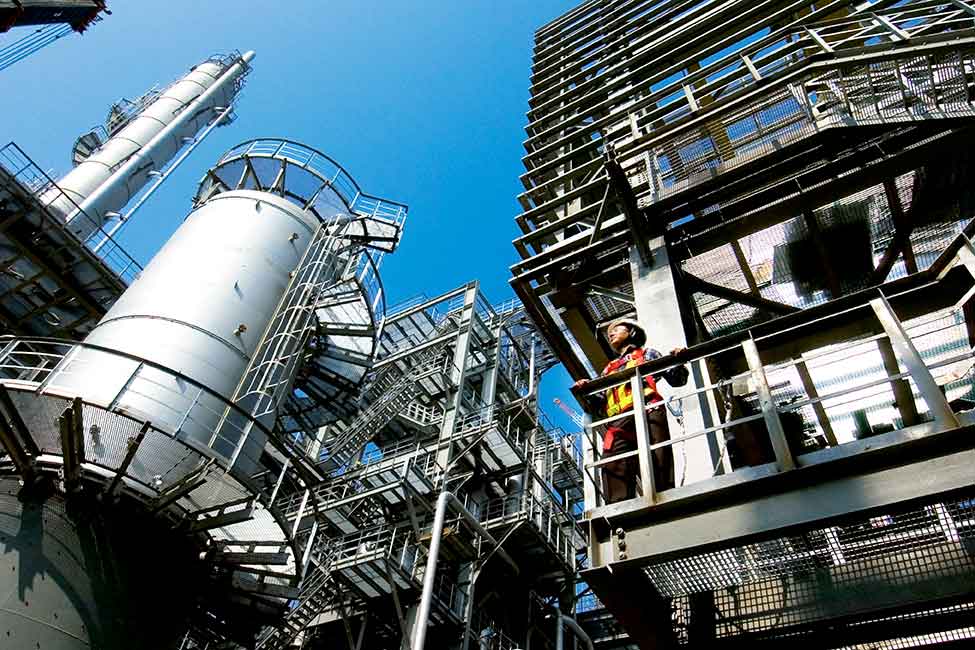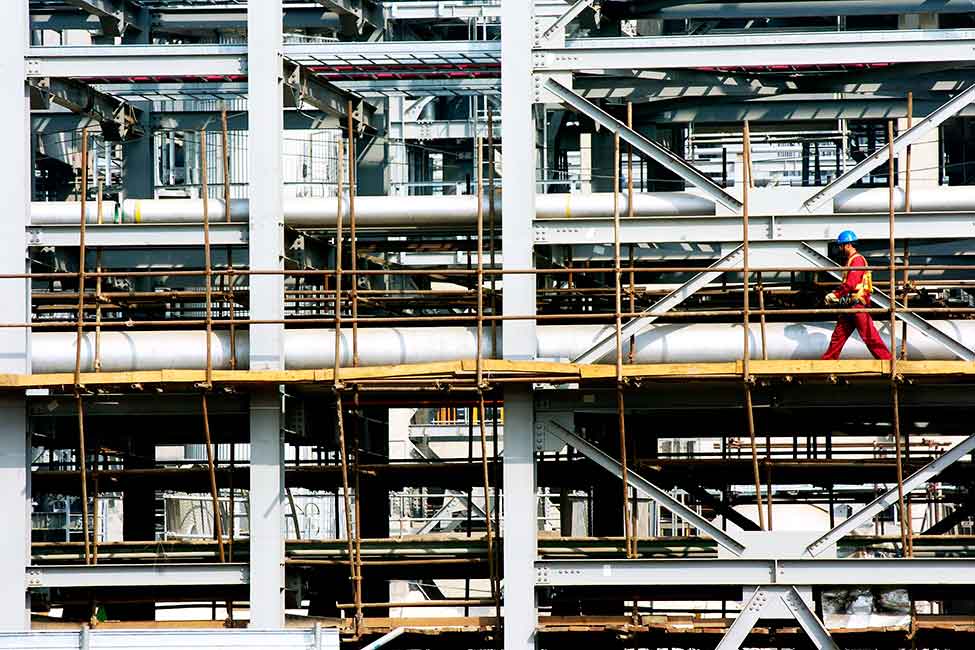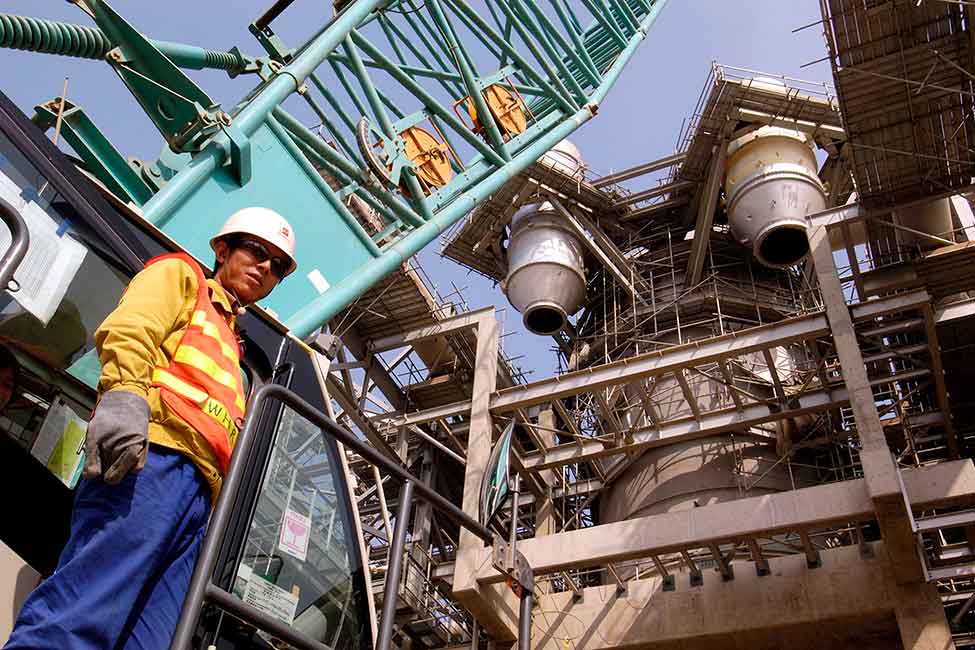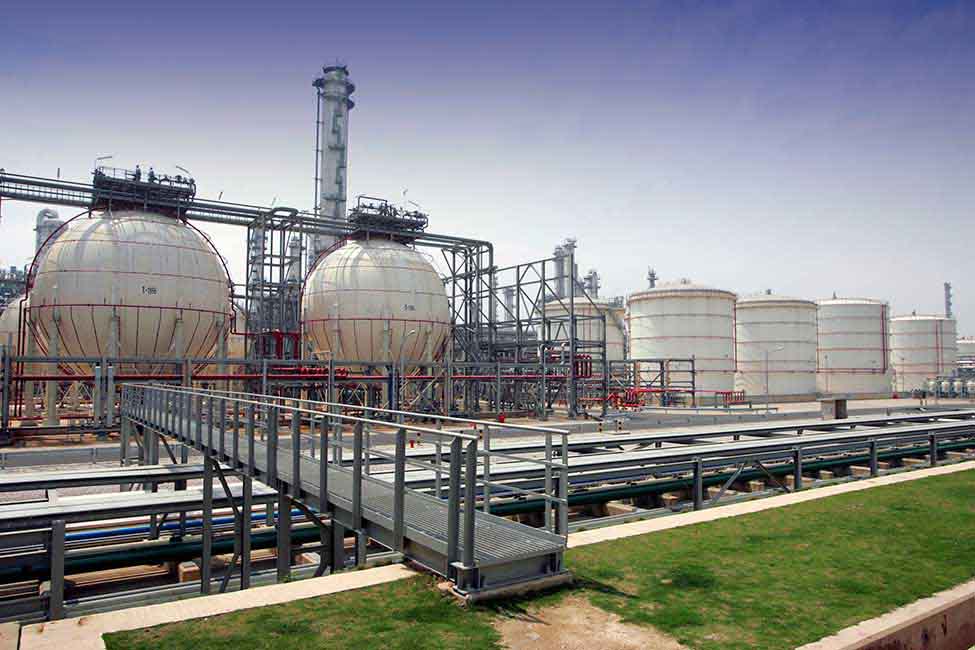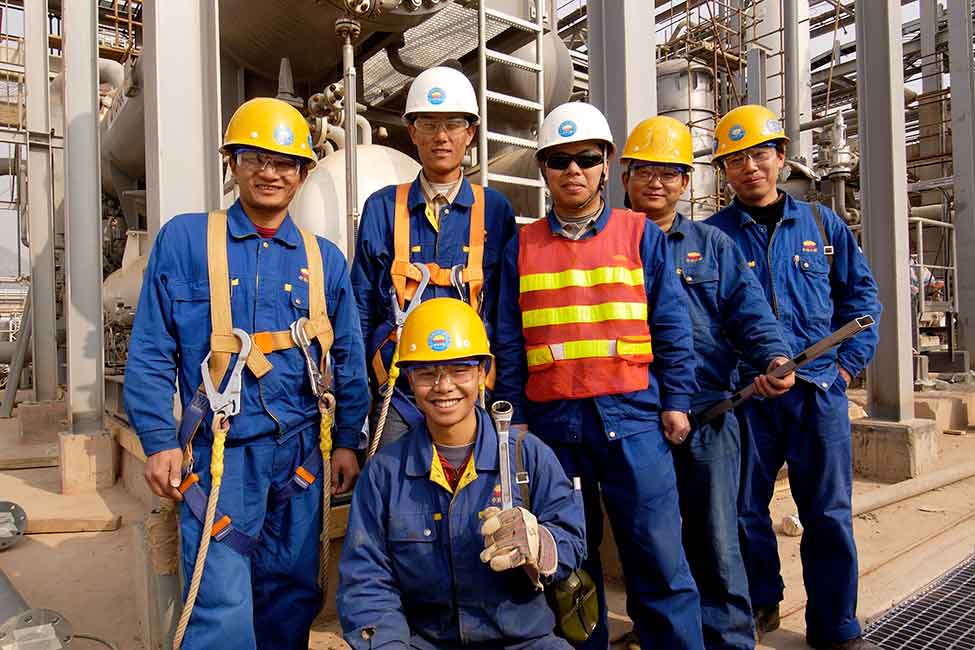A Bechtel consortium built 11 plants that comprise Nanhai. The project management consortium consisted of Bechtel, Sinopec Engineering Inc. of China, and Foster Wheeler Energy Limited of the UK.
The grassroots project at Daya Bay entailed building an ethylene cracker with a capacity of 800,000 metric tons per year, together with other process units, power generation facilities, utilities, and infrastructure.
In total, the complex—owned by a joint venture of Shell Nanhai BV and China National Offshore Oil company—produces some 2.3 million metric tons per year of products primarily for Guangdong province and China’s coastal economic zones.
Completed in 2005, the Nanhai petrochemicals project was then the largest Sino-foreign investment in China.
Expanding domestic petrochemical production capacity
Image Gallery
Building a workforce
The workforce went 4 million consecutive job hours without a single lost-time incident. We:
- Provided rigorous environmental, safety, and health training for the 25,000 people who worked on the project.
- Offered online and classroom craft training in 19 areas, such as concrete placement, structural steel placement, weld inspection, and rigging engineering
- Conducted certified craft training for unskilled local residents in scaffolding, rebar, carpentry, and other types of work
- Trained and certified more than 1,200 local residents in specific craft skills
- Directly hired several hundred local residents to support our role as the project management contractor
Inside the project
So massive and complex was the project that the definition phase alone had took year and a half and required collaboration among engineers from 15 countries, including China, Singapore, Japan, the United Kingdom, Spain, France, Italy, and the United States.
Site preparation began in late 2002, with crews moving more some 21 million cubic yards (16 million cubic meters) of earth—a volume equivalent to the amount of concrete poured to create China's Three Gorges Dam.
The centerpiece of the project is the naptha cracker, which uses heat and pressure to decompose heavy oils and separate the lighter ethylene, which is then used to form polyethylene—familiar plastic. In addition to the chemical processing units (styrene monomer, propylene oxide, and polypropylene), Nanhai includes a polymer warehouse and packaging facility, and a waste treatment center, and 56 other buildings.
Details
Designing an efficient diagnostics and control system to keep production running smoothly became a project in itself.
Early in the front-end design phase, our consortium's plant-automation group optimized a way for control systems to shift computing power away from central controllers out to such field equipment as sensors and actuators, effectively creating a local area network.
The new method for monitoring equipment reduced operation and maintenance costs because it makes instruments “smarter” so they can report diagnostic information—equipment fouling or a cavitating pump, for example. And because it’s an open standard rather than a proprietary one, it enables instruments from different vendors to communicate with each other.
Bechtel in China
Bechtel has been active in the People’s Republic of China since 1979, completing dozens of projects there—including a microelectronics facility, a paint factory, a nuclear power plant, and an automotive glass plant. Bechtel China received a construction license in China in December 1994, making it the first U.S. company to obtain such a license.
How Nanhai products are put to use
- Styrene monomer is a liquid used to make plastics, paints, synthetic rubbers, proetctive coatings, and resins.
- Propylene oxide is a commodity chemical used to produce intermediate products--from cosmetics to antifreeze--and key to produce polyurethanes, from which such items as seating foams, automotive parts, high-performance adhesives, and such synthetic fibers as Spandex are manufactured.
- Polypropylene is found, for instance, in bottle caps, drinking straws, and food containers.
- Ethylene glycol is an industrial compound found in everything from hydraulic brake fluid and ballpoint pens to plastics and films.
- Low-density polyethylene applications include shrink wrap, cable insulation, and milk cartons.
- Linear low-density polyethylene is used, for example, in plastic bags, plastic wrap, toys and geomembranes.
- High-density polyethylene can be found in beverage and food-storage containers


